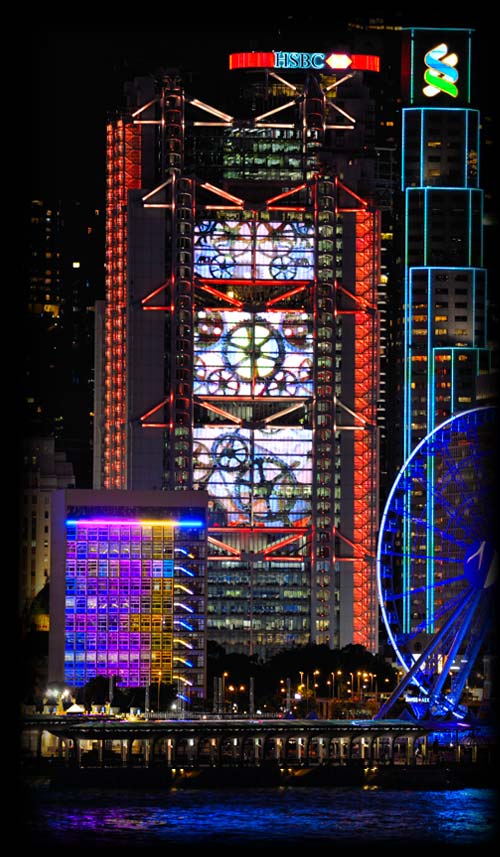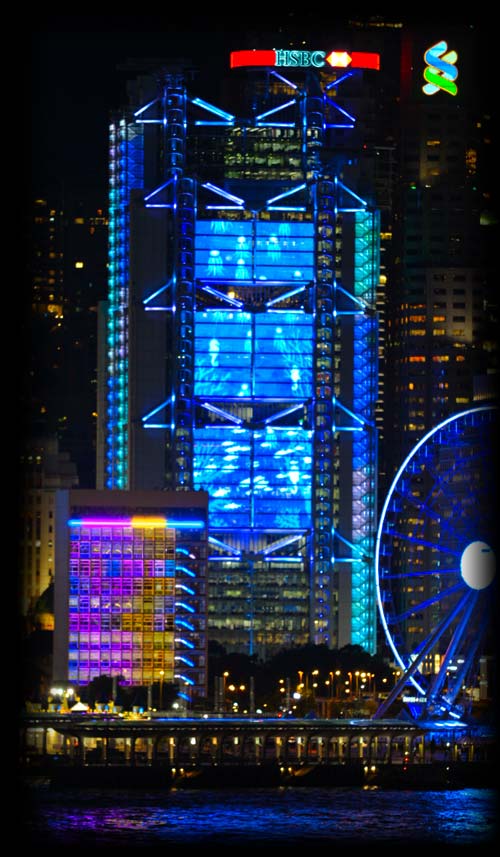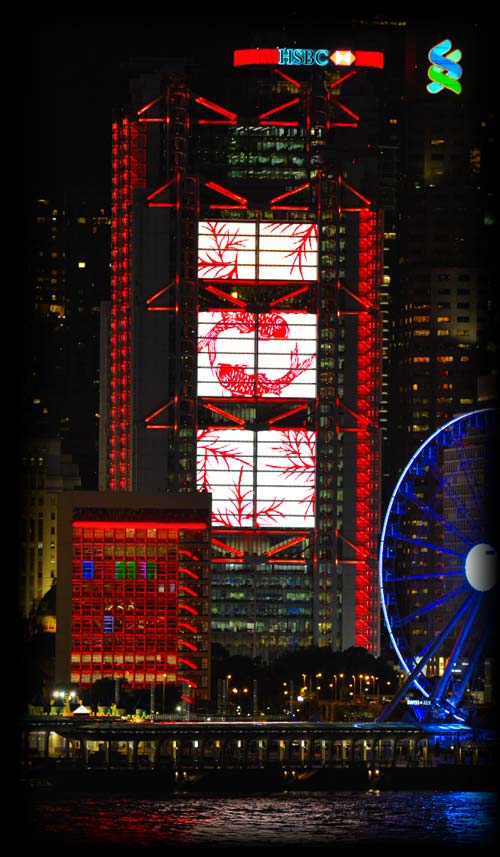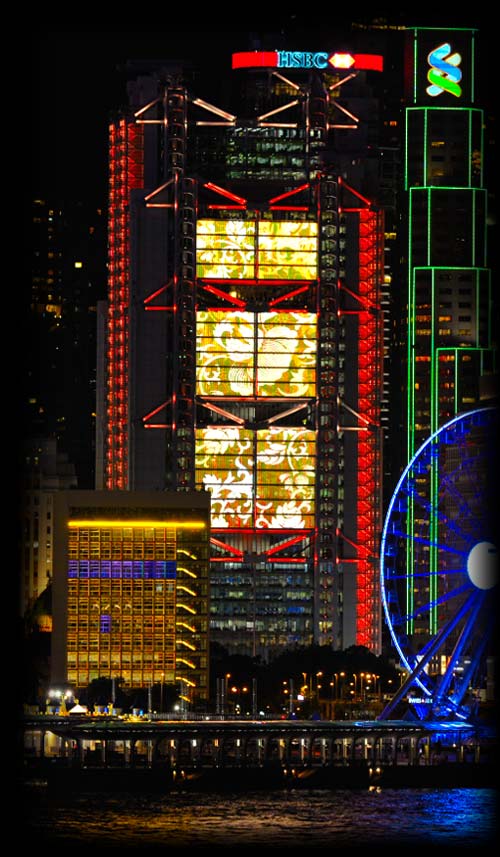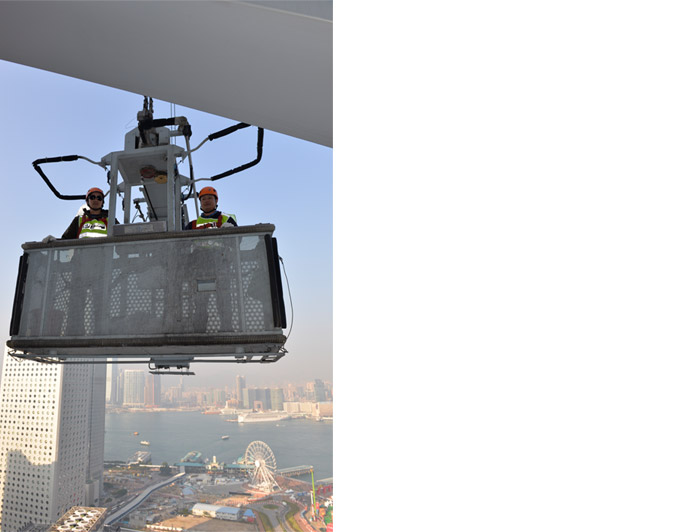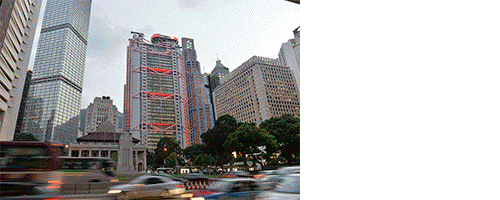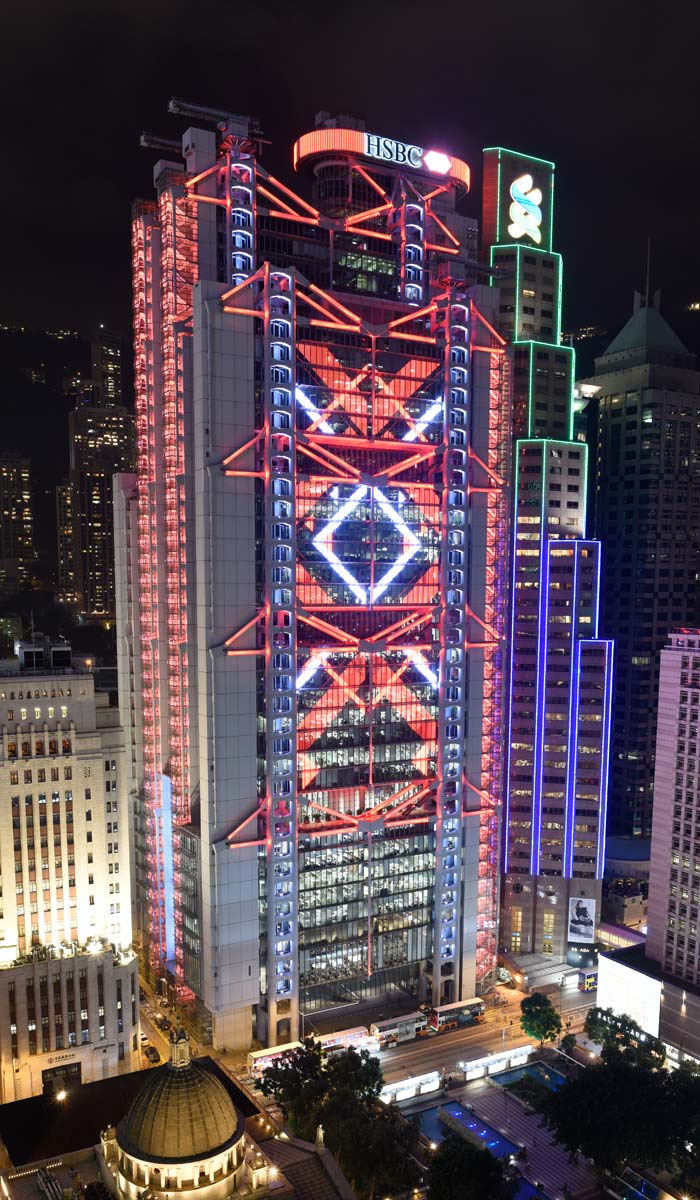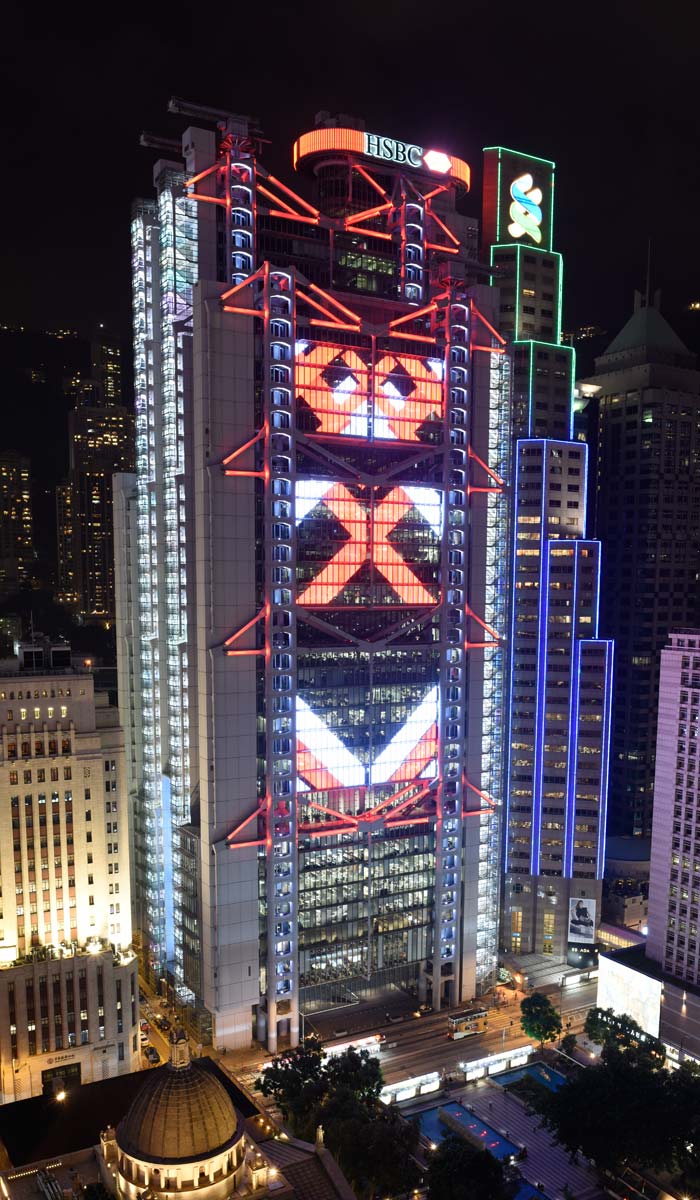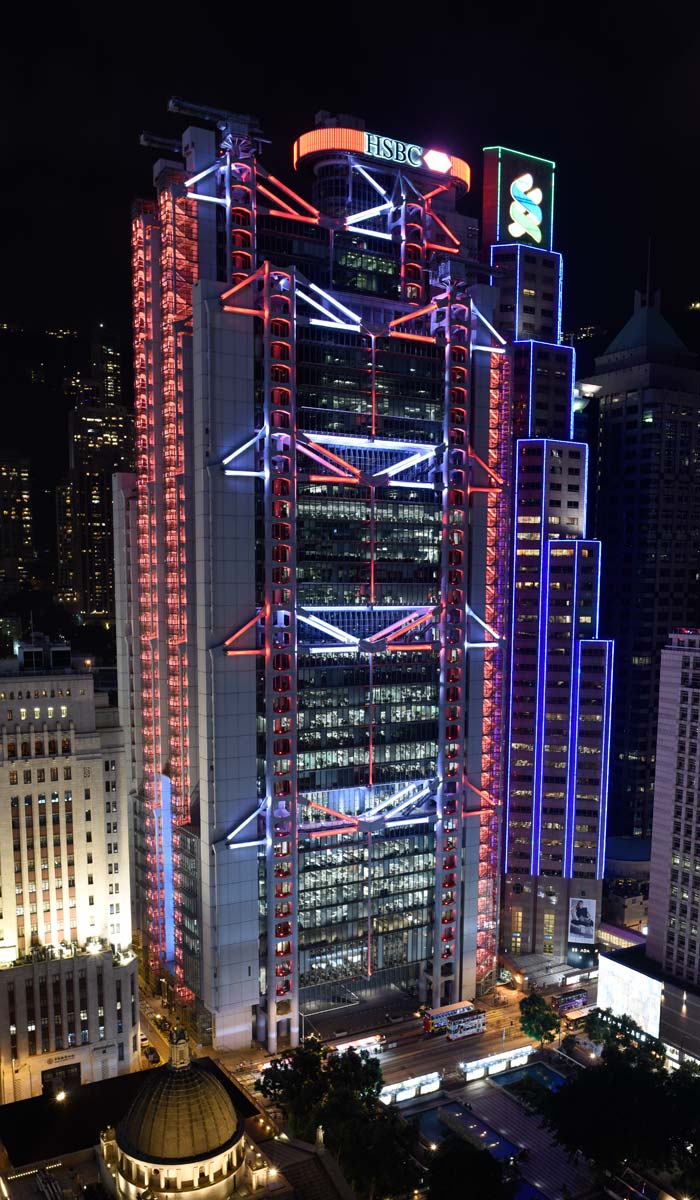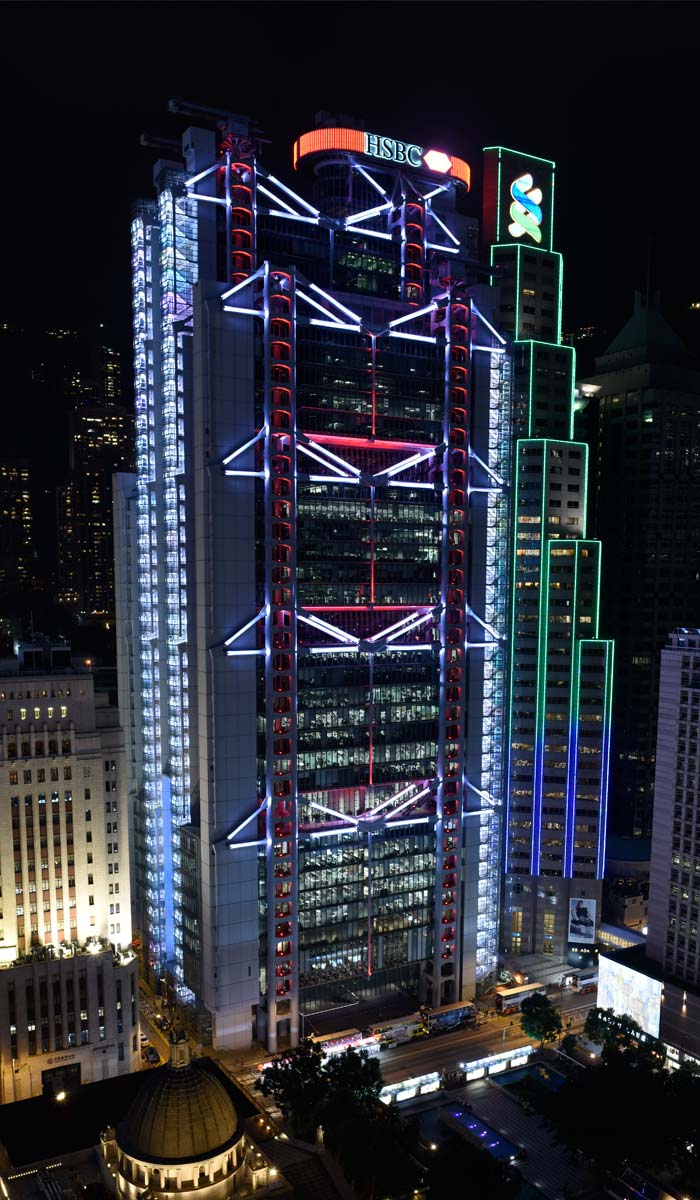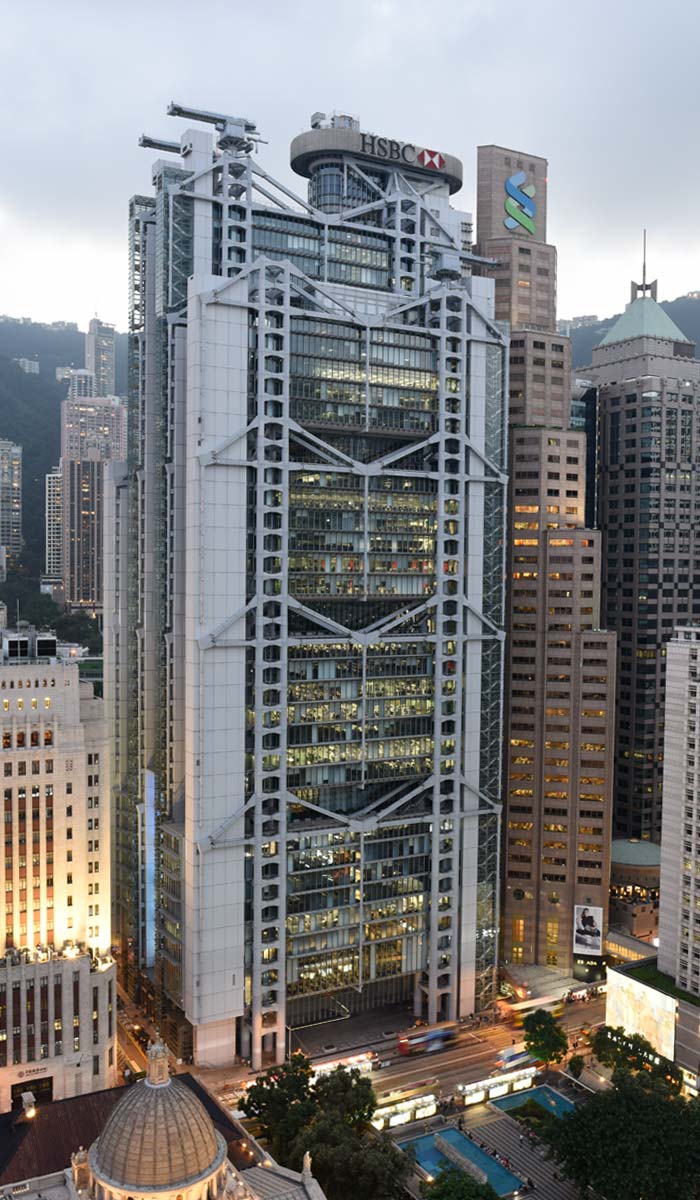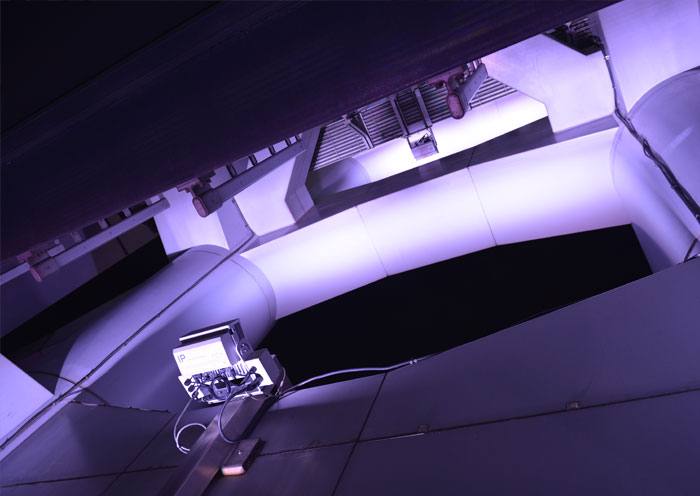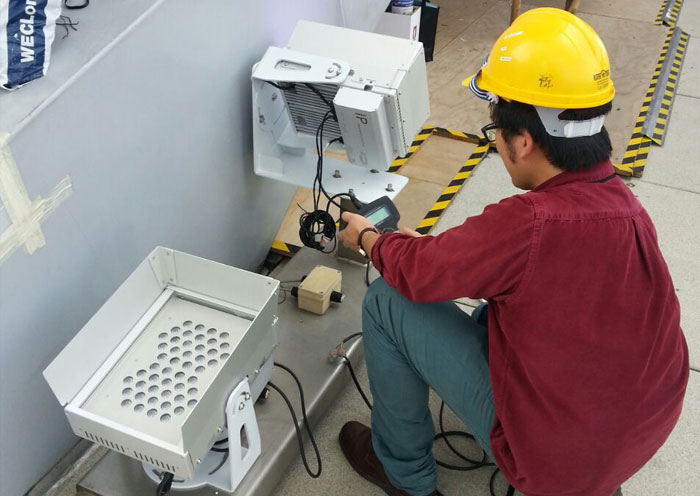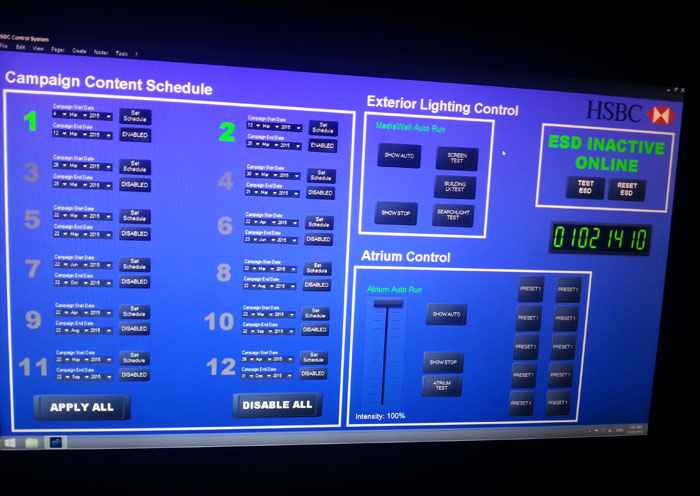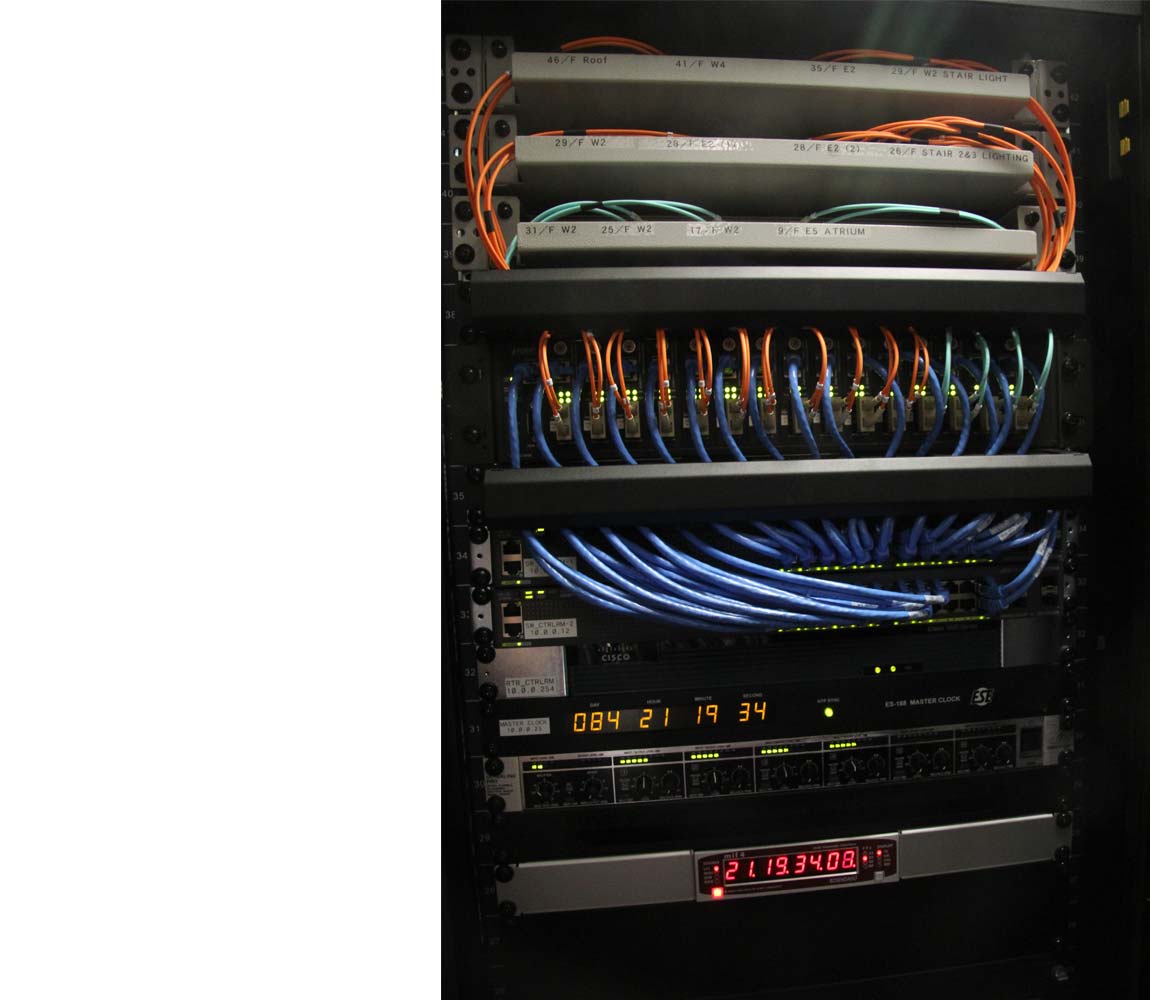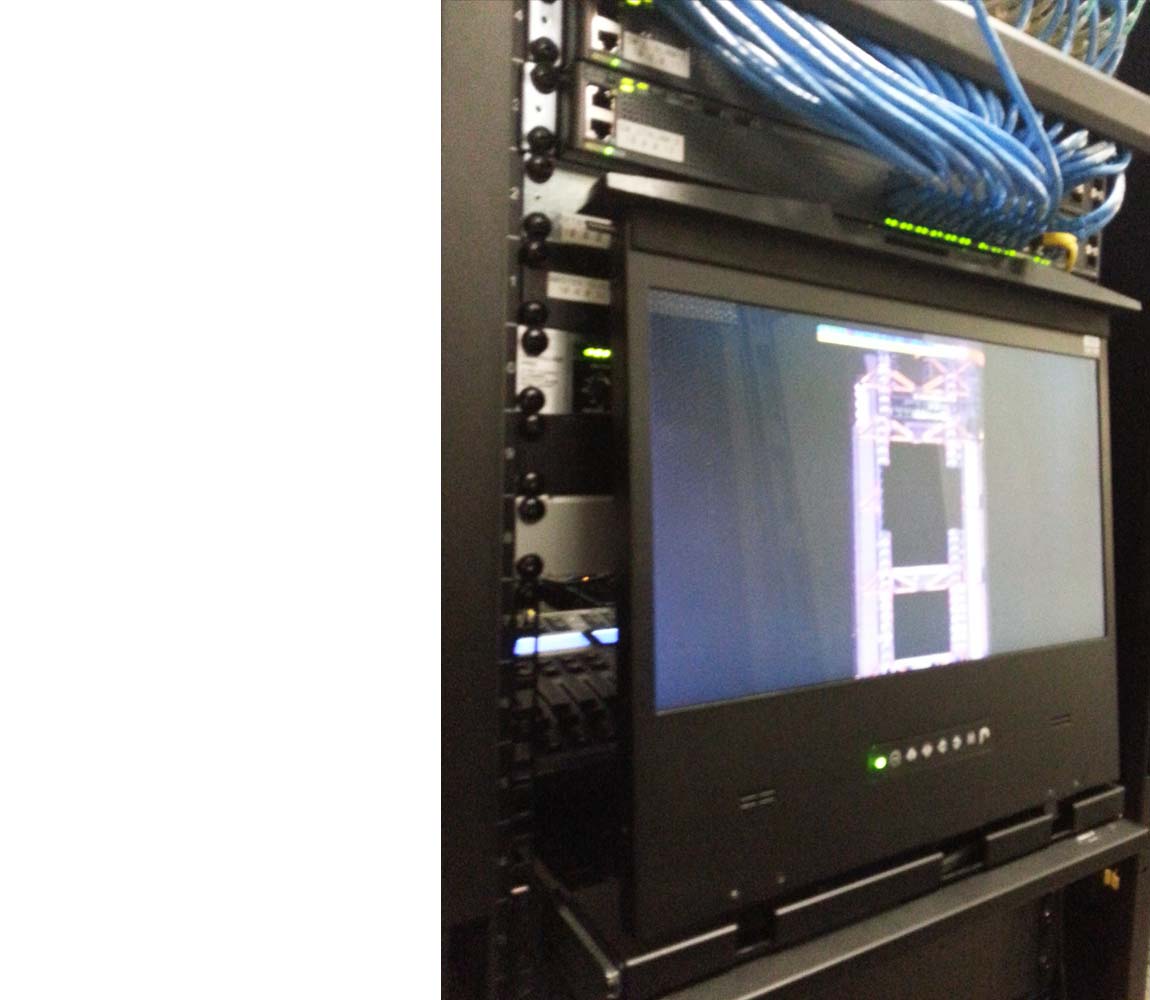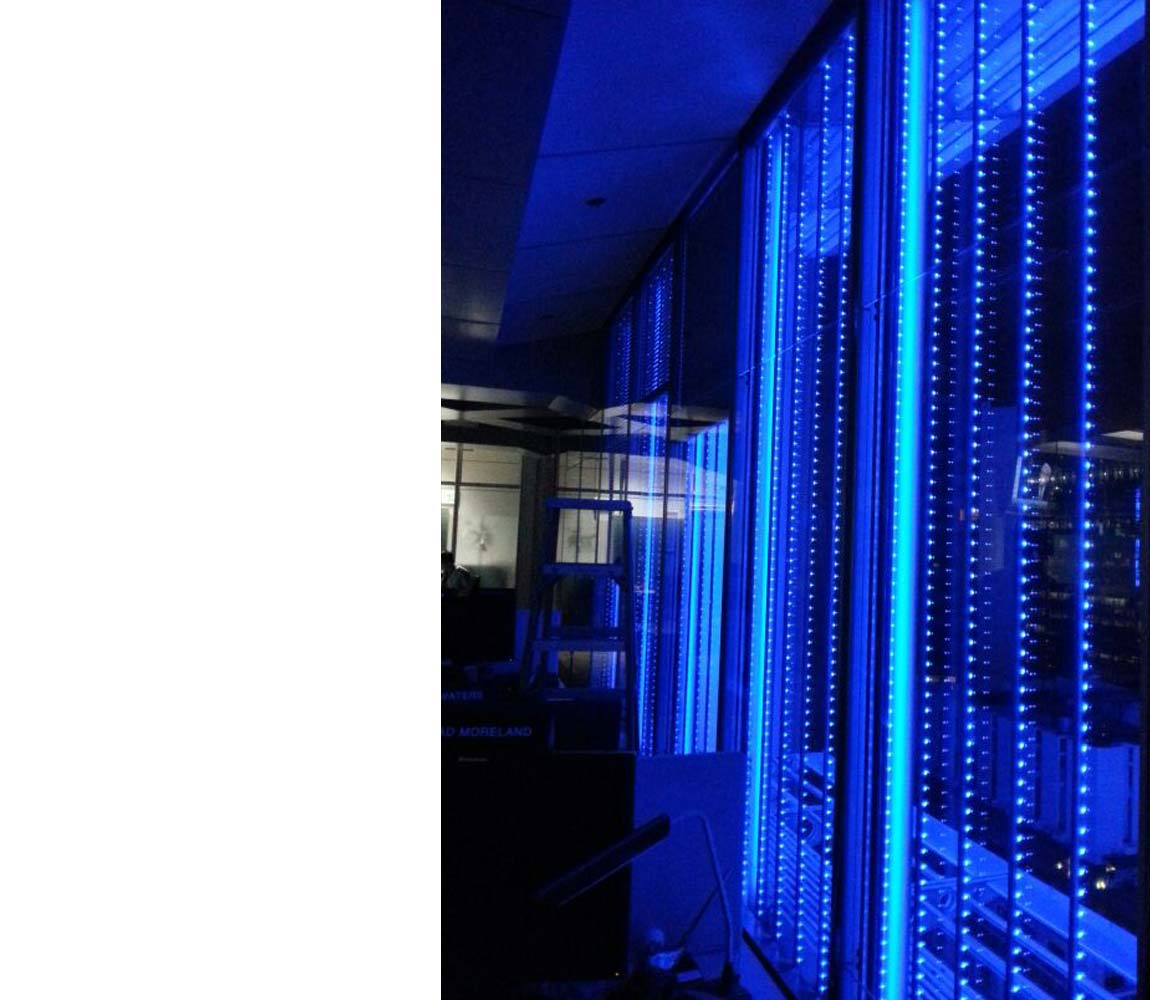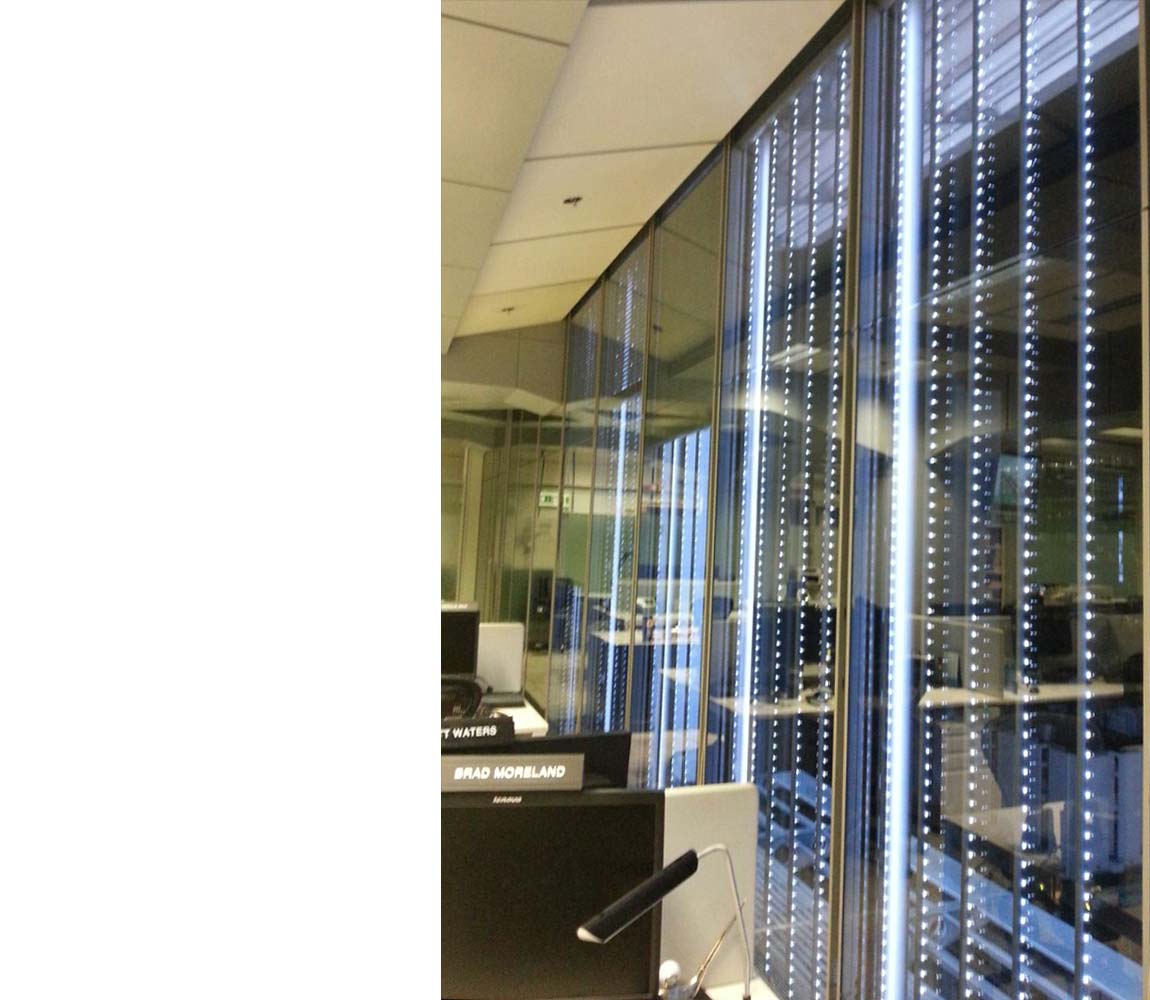HSBC Digital
Makeover
HSBC's Headquarters - Hong Kong
The HSBC Headquarters Building in Central – Norman Foster’s remarkable machine-like structure, had been the subject of a facade lighting project in 2003 which became ‘A Symphony of Lights’. HSBC HQ was one of twenty-four of the most significant buildings that joined Hong Kong’s permanent nightly light show that year.
OUR BRIEF
- Powerful narrow focus grazing wash lights for the main elements of the exoskeleton
- A smaller asymmetric lens wash light for the ladder trusses
- A wide angle soft flood light to illuminate the soffits of the prominent double height refuge floors
Illumination Physics had already developed the IP Wash 48, a four colour 100 watt very narrow wash with a 5 degree beam.
During on-site testing, it was determined that a single lens type was not good enough so differing lens angles were used.
Closest to the illuminated surface a diffused asymmetric lens gave even coverage whilst the main body of the fixture used a symmetrical 5 degree lens to promote a longer projection.
This multi lens technique is referred to by Illumination Physics as ‘double graze’.
Three powerful media walls were required as the messages being displayed were complex. No static display could achieve the goals.
The Illumination Physics design for the media wall equipment was to create a system that would be invisible during the day to avoid any negative effects on the appearance of the building. Furthermore, the media wall content needed to be legible from both a close distance of 100 metres and from the opposite side of Victoria Harbour 2-3 kilometers away.
OUR SOLUTION
Illumination Physics designed a media wall system that would be integrated into the glass facades between the refuge floors. The height of the glazed zones varies between five to seven floors. Three zones were chosen producing three large media walls which range from 880 square metres to 1,100
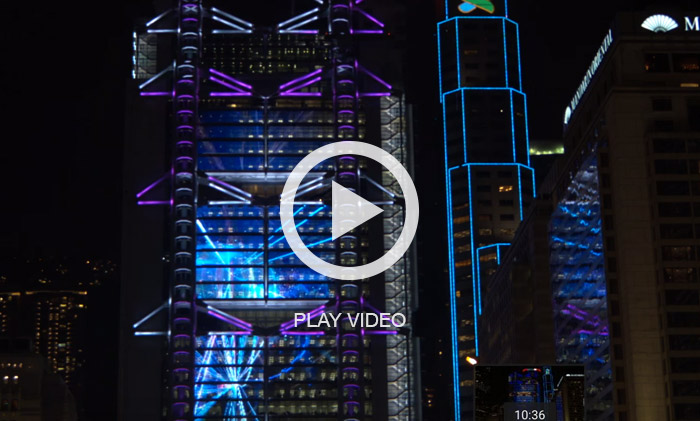
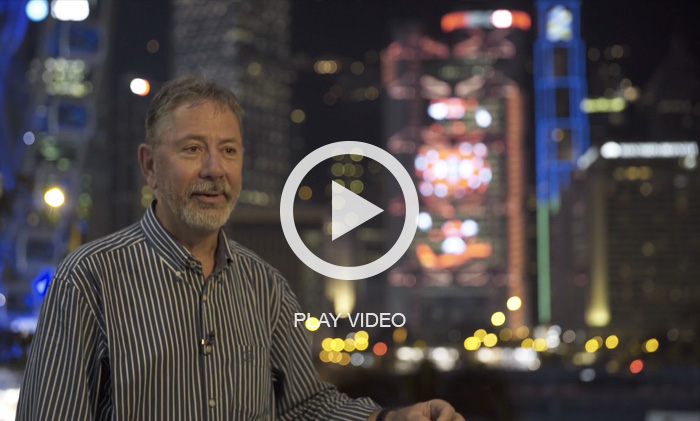
Lighting and, for the first time, media content have been combined to create a greater spectacle by displaying more meaningful images which relate to Hong Kong itself. This combination has further enhanced what is already a remarkable skyline.
PRODUCTS
Control System
- 680 x Universes (Arnet) – 348,160 channels for the media façades
- 7 x Universes (sACN) for the external lighting
- 10 x High Spec Custom Servers 100 x Arnet/DMX Converters
External Lighting
- 129 x illumination Physics custom IP Wash 48 four colour with very narrow wash lights
- 96 x illumination Physics custom IP Wash 24 four colour with asymmetric lens wash light
Media Wall
- 2652 x custom IP Glass Media strips which utilized a total of 217,464 RGB LED’s
- 40 x Universes per Floor
- Total Floors 17: Screen1 – 4 Floors, Screen 2 – 6 Floors, Screen 3 – 7 Floors
- 5 x Coolux Pandoras Box Player Pro
- 1 x Coolux Pandoras Box Manager STD
- 1 x Coolux Widget Designer PRO
- 7 x Dell R520 Custom Servers
- 85 x Pathport Octo Nodes
Façade/Exterior Lighting Control
- 1 x Dell R320 Custom Server (Clarity)
- 1 x LSC Clarity Lighting Control (2048 Channels)
- 11 x Pathport Quattro (Exterior LX)
- 2 x Pharos LPC
- 4 1 x Pharos RIO A
General System
- 1 x Rosendahl MiF4
- 5 x Cisco 2960XR Series Switch (Control Room and Screen Risers)
